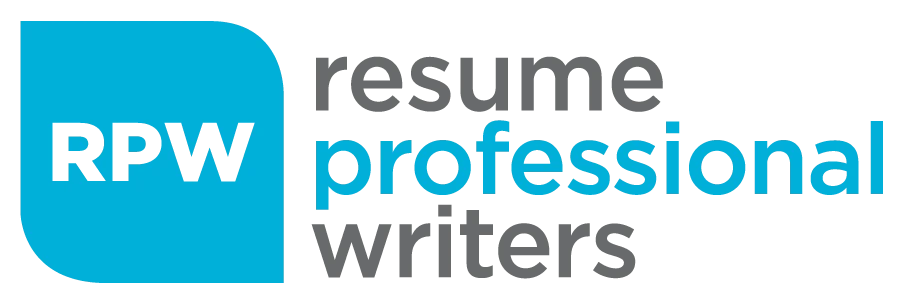Many professionals struggle to maintain productivity at work as mounting deadlines, unclear priorities, and constant interruptions disrupt their focus. Despite working long hours, progress often feels slow and unfulfilling. These challenges not only diminish morale but also hinder career growth, especially when consistent results and efficiency are essential to building professional credibility.
As workplace experts in performance optimization and efficiency strategy, career development specialists emphasize the importance of structured habits and tools that sustain long-term results. This guide is designed for professionals across sectors—from healthcare to IT, marketing, and government roles—who aim to reach peak efficiency. It explores the best ways to improve productivity at work through actionable, research-backed methods anyone can implement immediately.
1. Set Clear, Measurable Goals
Productivity starts with clarity of purpose. When tasks are ambiguous, even high-performing professionals struggle to maintain momentum. Setting specific, measurable, achievable, relevant, and time-bound (SMART) goals creates a clear roadmap for success. This approach transforms vague intentions into trackable outcomes and provides motivation through visible progress.
Employers who encourage goal alignment among their teams typically experience higher engagement and retention. A 2025 Gallup Workplace survey found that employees who understand their company’s goals are 3.6 times more likely to be engaged in their work. Professionals can boost their daily output by setting three major priorities each morning—each linked to a measurable business outcome.
Goal tracking software such as Asana, Trello, or ClickUp enhances visibility and collaboration, especially in hybrid work settings. By categorizing objectives by quarter, week, and day, teams ensure work remains strategic rather than reactive. A documented goal structure reduces cognitive load, helping employees focus on what truly drives impact.
2. Prioritize Tasks Using the Eisenhower Matrix
Many professionals mistake urgent tasks for important ones. The Eisenhower Matrix, a proven decision-making system, helps workers categorize tasks into four quadrants: urgent and important, important but not urgent, urgent but not important, and neither urgent nor important. This framework directs energy toward tasks that yield the highest long-term value.
| Quadrant | Focus |
|---|---|
| Urgent & Important | Do immediately |
| Important, Not Urgent | Schedule strategically |
| Urgent, Not Important | Delegate to others |
| Neither Urgent nor Important | Eliminate or postpone |
This matrix promotes critical thinking about priorities. For example, an IT specialist might delay responding to nonessential emails to tackle a major cybersecurity patch, while an HR executive may delegate administrative paperwork to concentrate on policy development. Over time, this method aligns daily behavior with organizational outcomes and builds stronger time discipline.
Professionals who apply the Eisenhower Matrix report lower burnout, as it prevents overcommitment to low-impact activities. Leaders can integrate this system into daily briefings or project meetings to ensure coherent priorities across departments.
3. Minimize Digital Distractions
Between social media notifications, instant messages, and continuous email alerts, digital interruptions dismantle focus faster than any other modern challenge. According to research published in Harvard Business Review, workers are interrupted every 6 to 11 minutes on average, leading to a 23-minute delay in regaining full concentration. This constant switching diminishes cognitive efficiency and output quality.
Professionals can counteract this by implementing focus techniques like “Do Not Disturb” modes during deep work periods. Designating specific time blocks for email responses—such as mid-morning and mid-afternoon—prevents message checking from becoming a compulsion. Similarly, mobile applications like Freedom or Focus Booster help regulate screen time and block distracting websites during concentration sessions.
Many organizations adopt company-wide “focus hours,” during which non-urgent communication pauses to allow critical thinking and uninterrupted creation. When combined with supportive policy, employees experience both psychological relief and increased creativity, directly increasing measurable productivity metrics.
4. Leverage Automation and Productivity Tools
Automation transforms repetitive administrative tasks—data entry, scheduling, reporting—into seamless processes that require minimal human oversight. Tools like Zapier, Microsoft Power Automate, and Slack integrations connect systems and ensure work flows efficiently between platforms. In 2025, time-saving automation has become standard practice in forward-thinking organizations.
Studies by Gartner indicate that automation can save businesses up to 25% of operational time by removing manual redundancies. For professionals managing complex workloads, this translates into reclaimed hours for analysis, innovation, or mentorship. For instance, an accountant who automates monthly reports through spreadsheet macros can instead focus on strategic forecasting or compliance assurance.
Choosing the right combination of tools depends on industry needs. Project management platforms like ClickUp, collaboration suites like Microsoft Teams, and CRM systems like Salesforce all streamline workflow communication. Productivity rises when employees are trained to maximize these platforms rather than merely adopt them superficially.
5. Practice Time Blocking for Deep Work
Time blocking remains one of the most powerful methods for mastering attention and structure. By scheduling specific time blocks for categories of tasks—emails, meetings, and high-focus projects—professionals transition from multitasking chaos into measured precision. Each block becomes a commitment to cognitive focus, improving both speed and quality of output.
Cal Newport, author of Deep Work, popularized the concept of uninterrupted concentration to produce high-value cognitive results. Professionals who apply deep work principles often complete significant deliverables in fewer hours compared to fragmented multitaskers. Many top executives reserve their mornings exclusively for complex decision-making and allocate afternoons for administrative reviews.
A simple calendar-based time blocking method encourages consistency. For those using Google Calendar or Outlook, color-coding time blocks for different types of work enhances visibility. When everyone in an organization adheres to shared focus periods, meeting culture also improves, reducing unnecessary calls that impede strategic productivity.
6. Improve Workplace Ergonomics and Environment
Physical environment greatly influences attention, comfort, and motivation. Poor lighting, noise, and temperature can reduce cognitive performance by as much as 20%. Forward-thinking employers recognize productivity requires ergonomically optimized workstations that support physical well-being throughout the day.
Simple ergonomic upgrades make substantial difference: adjustable chairs, standing desks, or dual monitors minimize strain and enhance posture. Environmental adjustments—such as natural lighting and indoor greenery—also increase mood and creativity. A study by the University of Exeter found that enriched workspaces with plants and artwork can raise productivity by 15%.
Professionals working remotely should replicate optimal conditions at home by maintaining a dedicated workspace separate from personal areas. Consistent lighting, decluttered surroundings, and noise-canceling headphones help create psychological boundaries between leisure and labor, thus sustaining motivation across hybrid setups.
7. Take Regular Breaks to Boost Cognitive Function
Contrary to common belief, constant work does not equal higher output. The human brain performs optimally when rhythmically alternating between focus and rest. Break schedules such as the Pomodoro Technique—25 minutes of focused work followed by 5-minute breaks—help sustain long-term concentration while preventing fatigue.
Neuroscientific research from Stanford University shows that short, deliberate breaks improve memory retention, problem-solving ability, and creativity. When professionals step away from computers for brief walks, stretching, or mindfulness exercises, oxygen circulation improves, replenishing mental energy.
Organizations promoting built-in rest periods or “microbreaks” often report fewer burnout cases and higher project quality scores. Whether through corporate wellness initiatives or self-managed scheduling, consistent rest cycles enhance sustainable productivity far better than prolonged grinding.
8. Strengthen Communication and Collaboration
Effective communication prevents errors, accelerates project coordination, and builds accountability within teams. Clear dialogue about expectations and deliverables eliminates the need for repetitive clarification emails or meetings. Modern tools like Slack, Microsoft Teams, and Notion centralize communication to enhance information transparency and knowledge sharing.
Gallup data highlights that organizations with open, high-trust communication experience 21% greater profitability and reduced turnover. Structured communication protocols—weekly syncs, progress dashboards, and shared cloud repositories—standardize collaboration and save hours otherwise lost to confusion or duplicated effort.
Cross-departmental initiatives also benefit from collaborative workflows. For example, marketing teams collaborating with data analysts early in campaign planning generate more precise targeting and performance metrics. When communication becomes proactive rather than reactive, workplace culture shifts toward alignment, reducing inefficiencies across all functions.
9. Cultivate a Growth Mindset and Continuous Learning
Professionals with a growth mindset—those who view challenges as opportunities—consistently outperform those constrained by perfectionism or fear of failure. Continuous learning equips employees to adapt to evolving technologies and workflows, making them more efficient and resilient in demanding industries.
Training opportunities such as LinkedIn Learning, Coursera, or internal mentorship programs reinforce a sense of self-efficacy. Businesses investing in skill-building benefit from innovative, autonomous employees who require less supervision. A LinkedIn Workplace Learning Report revealed that 94% of employees would stay longer at companies that invest in professional development.
Productivity therefore emerges not merely from faster execution but from smarter skill integration. For example, an engineer who develops project management competence can manage timelines without external dependencies. Such internal growth reduces handoffs and streamlines overall workflow efficiency.
10. Maintain Work-Life Balance to Sustain Long-Term Productivity
True productivity extends beyond the workplace. Overworking inevitably triggers diminishing returns—fatigue, lowered concentration, and declining creativity. Maintaining boundaries between professional and personal time preserves mental health, ensuring sustained focus during active hours. Balanced employees demonstrate higher loyalty and innovation levels, key indicators of sustainable productivity.
Employers adopting flexible work arrangements and mental health initiatives see tangible performance boosts. The American Psychological Association reported organizations supporting work-life balance experience turnover reductions of up to 25%. Continuous output requires periodic renewal—through rest, hobbies, physical exercise, and family engagement.
Professionals should treat restorative routines as strategic investments. By preserving mental resilience, they preserve professional excellence too. Healthy employees form the foundation of efficient, future-ready enterprises capable of innovation and consistent delivery.
Empower Productivity Through Strategic Focus
Professional success depends on clarity, structure, and the ability to focus on what truly matters. By applying proven productivity strategies—from automation tools to effective time management—professionals can achieve higher-quality results and build lasting career growth. These habits not only improve daily performance but also strengthen one’s overall professional identity.
Enhance your career potential with a resume that reflects your focus and accomplishments. Our expert resume writers craft achievement-driven documents that showcase your strengths, highlight measurable results, and position you for greater success. Contact us today to transform your resume into a powerful career asset.
Frequently Asked Questions
What are the most effective ways to improve productivity at work?
Prioritizing tasks with the Eisenhower Matrix, establishing SMART goals, and practicing time blocking produce consistent improvements. Combining these with automation and focus strategies maximizes results while minimizing mental fatigue.
How can professionals overcome procrastination?
Breaking assignments into smaller, timed tasks and setting visual progress checkpoints helps maintain accountability. Tools like Trello or Pomodoro timers encourage steady advancement by rewarding incremental success and sustained focus.
Which tools best support team productivity?
Platforms such as Asana, Slack, and Microsoft Teams provide structured collaboration and project visibility. Integrating these tools with CRMs or scheduling systems ensures synchronized operations and faster decision-making across teams.
Why is taking breaks important for maintaining productivity?
Brain functioning declines with prolonged effort. Regular breaks—ideally every 90 minutes—restore cognitive resources, improve accuracy, and prevent burnout. Neuroscientific findings confirm sustained focus requires structured rest.
How does a positive work environment influence productivity?
Supportive atmospheres that provide ergonomic comfort, recognition, and autonomy encourage employees to perform at their best. A well-organized workspace and inclusive culture enhance motivation, creativity, and long-term output.









